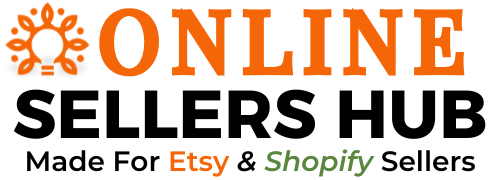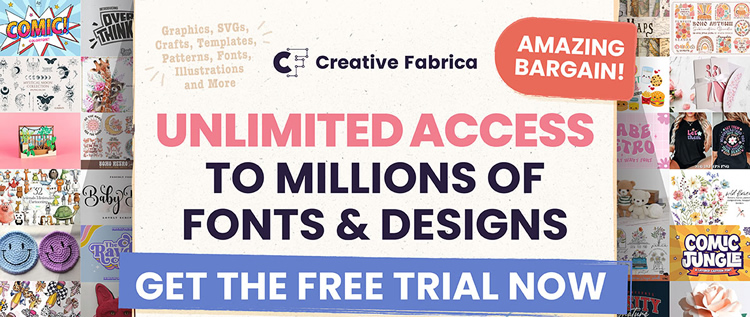How do I list my first product on Etsy?

Etsy Pedia: How do I list my first product?
The thrill of opening your Etsy shop is exhilarating, but the very first step – listing your product – can feel like navigating a maze. You’ve poured your heart and soul into creating something unique, and now you need to present it to the world in a way that captures attention and drives sales. Many new Etsy sellers find themselves staring at a blank page, wondering if they’re doing it right. What information is crucial? How do you make your listing stand out from the crowd? Don’t worry, you’re not alone. This guide is your roadmap to confidently listing your first product, transforming that initial hurdle into a confident stride toward Etsy success.
Table of Contents
- Getting Started: Your First Product Listing
- Step-by-Step: Navigating the Etsy Listing Form
- Photos: Your Digital Storefront
- Title: The Hook that Grabs Attention
- About This Listing: Setting the Stage
- Description: Telling Your Product’s Story
- Pricing and Inventory: The Business End
- Shipping: Getting Your Creation to Its New Home
- Tags and Attributes: The SEO Powerhouse
- Beyond the Basics: Optimizing for Discovery
- Frequently Asked Questions
Getting Started: Your First Product Listing
Listing your first product on Etsy is more than just filling out a form; it’s about creating a compelling introduction to your brand and your offerings. Think of each listing as a mini-sales page. It needs to be informative, attractive, and optimized to be found by the right buyers. This process can seem daunting at first, but by breaking it down into manageable steps, you’ll be listing like a pro in no time.
For those eager to streamline the entire process and avoid common pitfalls, consider exploring resources like our How to Sell on Etsy Full Guide. It’s designed to accelerate your learning curve and equip you with the essential knowledge right from the start.
Step-by-Step: Navigating the Etsy Listing Form
Once you’re logged into your Etsy shop manager, navigate to “Listings” and then click “Add a listing.” You’ll be presented with a series of fields. Let’s break them down.
Photos: Your Digital Storefront
This is arguably the most critical part of your listing. High-quality photos are what will make a potential buyer stop scrolling and click on your item.
-
Showcase Your Product: Use all 10 photo slots if possible. Show your product from multiple angles, in use, and highlight any unique details or textures.
-
Lifestyle Shots: Include photos that show your product in context. For example, if you sell mugs, show someone enjoying a hot beverage from it. This helps buyers envision themselves using your product.
-
Scale and Size: If relevant, include a photo that clearly indicates the size of your product, perhaps next to a common object or on a model.
-
Clarity and Lighting: Ensure your photos are well-lit, in focus, and have a clean, uncluttered background. Natural light is often best.
-
Video: Etsy allows you to upload a short video. This is a fantastic way to showcase how your product works, its movement, or its dimensionality.
-
Why This Matters: In the crowded online marketplace, professional-looking photos are non-negotiable. They build trust and communicate the quality of your craftsmanship.
-
Pro Tip: Use mockups for digital products. Tools like those found in our Etsy Listing Mockup Templates Bundle for Digital Products can elevate your digital item’s presentation significantly.
-
Key Takeaways: High-quality, diverse photos are your most powerful selling tool. Show your product clearly, in context, and from all angles.
Title: The Hook that Grabs Attention
Your title is the first piece of text a potential buyer sees and is crucial for Etsy SEO. Think like a shopper. What words would they use to search for your item?
-
Be Descriptive: Include keywords that accurately describe your product.
-
Prioritize Important Keywords: Place the most relevant and high-volume keywords at the beginning of your title.
-
Use Long-Tail Keywords: Combine several words to create more specific phrases (e.g., “Handmade Ceramic Coffee Mug with Blue Glaze”).
-
Avoid Keyword Stuffing: Make sure your title reads naturally and isn’t just a jumble of unrelated words.
-
Why This Matters: A strong title helps Etsy’s search engine match your product with relevant buyer queries, increasing visibility.
-
Pro Tip: For advanced keyword strategies that can help you identify what buyers are actually searching for, consider a tool like ETShop.ai.
-
Key Takeaways: Your title is a powerful SEO tool. Be descriptive, use relevant keywords, and aim for natural language.
About This Listing: Setting the Stage
This section provides key details about your product that help buyers understand what they’re purchasing and helps Etsy categorize your item.
-
Who Made It? (I made it, A small business I own, Another company or manufacturer)
-
What Is It? (A finished product, A supply or tool)
-
When Was It Made? (Made to-order, 2020s, 2010s, etc.)
-
Primary Color, Secondary Color: Select the most prominent colors.
-
Material: Be specific about the materials used.
-
Occasion: Is it for a birthday, holiday, or everyday use?
-
Style: (e.g., Bohemian, Minimalist, Vintage)
-
Why This Matters: Accurate categorization helps Etsy understand your product and show it to the right audience. It also provides quick, scannable information for buyers.
-
Key Takeaways: Fill out these fields accurately to improve discoverability and provide essential buyer information.
Description: Telling Your Product’s Story
The description is where you can truly connect with your buyer and provide all the necessary details they need to make a purchase decision.
-
Start with a Hook: Reiterate the main benefit or unique selling proposition.
-
Elaborate on Features and Benefits: Go into detail about what makes your product special. Explain how it solves a problem or enhances the buyer’s life.
-
Provide Dimensions and Specifications: Clearly state the size, weight, and any other important specifications.
-
Care Instructions: If applicable, explain how to care for the product.
-
Materials Used: List all materials again for transparency.
-
Personalization Options: If you offer customization, explain how it works clearly.
-
Keywords, Naturally: Weave in your target keywords organically within the descriptive text.
-
Why This Matters: A well-written description addresses potential questions, builds trust, and can convert browsers into buyers.
-
Pro Tip: If you struggle with writing compelling product descriptions, our Premium SEO Guide offers valuable insights into crafting persuasive copy that also ranks well.
-
Key Takeaways: Tell a story, provide all essential details, and use your keywords naturally to engage buyers.
Pricing and Inventory: The Business End
This is where you set the financial terms for your product.
-
Price: Research comparable items to set a competitive yet profitable price. Consider your material costs, labor, Etsy fees, and desired profit margin.
-
Quantity: If you have multiple of the same item, set the available quantity. If it’s a one-of-a-kind item, set it to 1.
-
SKU (Stock Keeping Unit): This is an optional internal tracking number for your own inventory management.
-
Personalization: If you offer personalization, set it up here. Clearly define what can be personalized and how the buyer should provide information.
-
Why This Matters: Correct pricing ensures profitability, and accurate inventory prevents overselling.
-
Key Takeaways: Price strategically to reflect value and cover costs. Manage your inventory accurately.
Shipping: Getting Your Creation to Its New Home
Clear and accurate shipping information is crucial for customer satisfaction.
-
Processing Time: How long will it take you to make or prepare the item for shipping? Be realistic.
-
Shipping Profiles: You can create shipping profiles for different destinations or types of items.
-
Shipping Costs: Decide whether to offer free shipping (build into your price) or charge actual calculated costs. Etsy has tools to help calculate these.
-
International Shipping: Decide if you will ship worldwide and set your rates accordingly.
-
Packaging: While not directly in the listing form, consider how you will package your item for safe transit.
-
Why This Matters: Buyers are often concerned about shipping costs and delivery times. Transparency here can prevent cart abandonment.
-
Pro Tip: For those who want to offer beautiful visual aids for their digital products or enhance the perceived value of physical items, explore our Etsy shop templates which can include professional-looking mockup images.
-
Key Takeaways: Be realistic with processing times and transparent with shipping costs.
Tags and Attributes: The SEO Powerhouse
This is where you directly influence how buyers find your product through Etsy search.
-
Tags (13 maximum): These are your most important SEO tool. Use all 13.
- Think broadly and specifically.
- Use multi-word phrases (long-tail keywords).
- Mix and match keywords from your title and description.
- Consider synonyms and related terms buyers might use.
- Don’t repeat words across tags if possible; use variations.
-
Attributes: These are specific characteristics like color, style, occasion, material, etc. They function similarly to tags and help Etsy refine searches. Fill out as many relevant attributes as possible.
-
Why This Matters: Tags and attributes are the backbone of Etsy SEO. They directly tell Etsy’s algorithm what your product is and who it’s for.
-
Pro Tip: If you’re looking for a comprehensive approach to mastering Etsy SEO, our Listing Audit Service can provide personalized feedback to boost your visibility.
-
Key Takeaways: Utilize all 13 tags and all relevant attributes with descriptive, buyer-focused keywords.
Beyond the Basics: Optimizing for Discovery
Once your first product is listed, the work isn’t entirely done. Continuous optimization is key to long-term success.
-
Review and Refine: After a few weeks, check your stats. Which listings are getting views? Which aren’t? Adjust titles, tags, and descriptions accordingly.
-
Encourage Reviews: Positive reviews build social proof and boost your listing’s credibility.
-
Promote Off-Etsy: Share your listings on social media, your own website, or through email newsletters. Consider exploring resources on marketing outside Etsy.
-
Consider Etsy Ads: Once you have some data, you might consider running Etsy Ads to increase visibility.
-
Why This Matters: The Etsy algorithm is dynamic. Continuous improvement and promotion ensure your products remain discoverable.
-
Key Takeaways: Optimization is an ongoing process. Monitor your stats, encourage reviews, and promote your products actively.
Frequently Asked Questions
Q1: How many photos should I use for my first Etsy listing?
A1: It’s highly recommended to use all 10 available photo slots. The more visual information you provide, the better buyers can understand your product, leading to more informed purchase decisions and fewer questions.
Q2: What’s the best way to find keywords for my Etsy listing title and tags?
A2: Start by thinking like a buyer. What terms would you use to search for your item? Then, explore Etsy’s search bar (type in your keywords and see what suggestions pop up), look at successful competitors’ listings, and consider using specialized Etsy SEO tools like EverBee or ETShop.ai for in-depth research.
Q3: Should I offer free shipping on my first product?
A3: Many sellers find that offering free shipping (by building the shipping cost into the item price) can increase conversions. However, it’s essential to do the math to ensure you’re still profitable. You can also offer calculated shipping based on the buyer’s location. Experiment to see what works best for your products and target audience.
Q4: How long should my Etsy product description be?
A4: While there’s no strict word count, aim for a comprehensive description that answers all potential buyer questions. Start with a concise, engaging summary, and then elaborate on features, benefits, materials, dimensions, and care instructions. Prioritize clarity and readability.
Q5: What happens if I list my first product and it doesn’t sell right away?
A5: Don’t get discouraged! It often takes time for your listings to gain traction. Continue to optimize your titles, tags, and descriptions, ensure your photos are top-notch, and promote your shop. Consider exploring resources like our Building a New Shop category for more foundational advice.
Listing your first product on Etsy is a significant milestone. By following these steps and focusing on creating high-quality, informative, and attractive listings, you’re setting a strong foundation for your Etsy business. Remember that consistency and continuous learning are key.
Ready to take your Etsy journey to the next level? Don’t miss out on our exclusive offers and resources designed to help you succeed. Explore our Etsy Shop Audit Service for a comprehensive review of your shop, or discover valuable insights in our Etsy Guides & Courses to master every aspect of selling on the platform. And for new sellers, take advantage of the Etsy Referral to get 40 free listings!
What was the first product you listed on Etsy? Share your experiences and any tips you have in the comments below!




